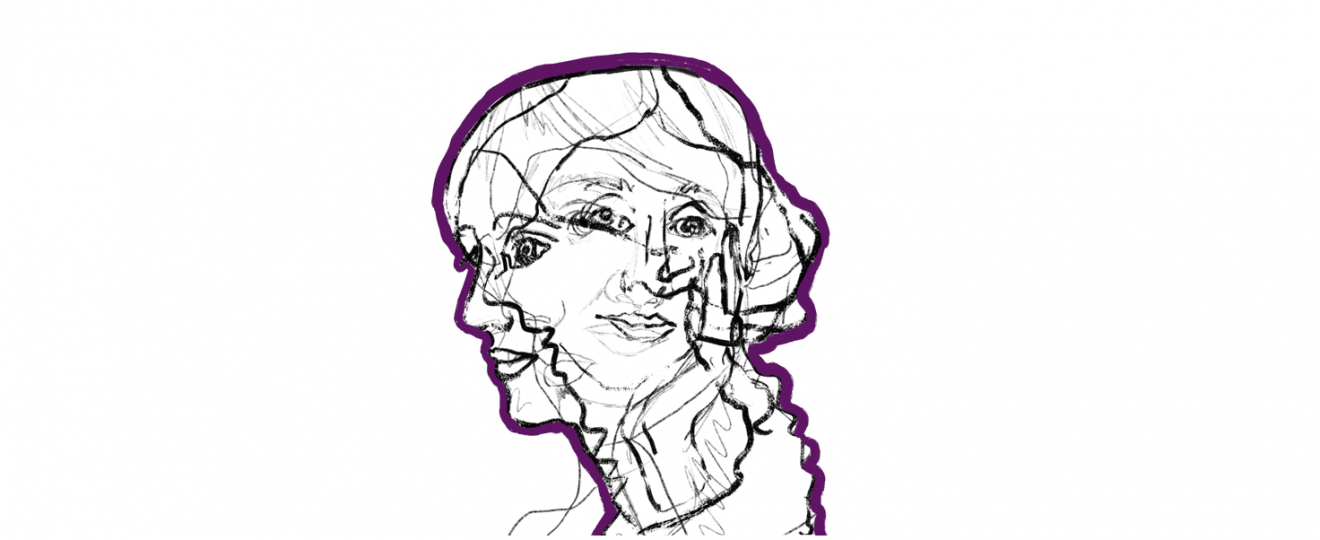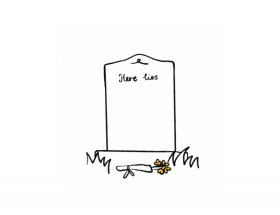The first time I read Virginia Woolf I was 13 years old and hardly understood the stream of consciousness babble of words written on paper before my eyes. I thought it would make me look smart, but in truth, I had never felt dumber than I did as I leafed through the pages mustering every ounce of effort to appreciate Ms. Woolf’s unique stylings.
The Waves is one of her more experimental variations, and the narrative was so wildly incoherent to me it crashed and burned before I could get to the last page (or truthfully even the middle of the book). Soliloquy after soliloquy I found myself increasingly lost in the Non-Newtonian time within which the thoughts of all six characters seemed to be suspended.
A couple of years later I gave her another try. To The Lighthouse was a pleasant surprise to my on-the-floor expectations. I found an unfathomable truth in the formerly confusing element of stream of consciousness. The events that transpired within the novel told in linear fashion are rather simple, boring if thought of as such. The way Virginia Woolf captured them, though, spoke of a dimension I had never seen captured in literature before, a painting of the direct thoughts of the characters. She seemed to me initially an Impressionist, layering blurry recountings of the same thing to put together a picture that while beautiful, hardly resembled the uniform, singular truth we are taught to accept as general common sense.
Time to Ms. Woolf was something that only existed as we saw it, all through our own pieces of glass in different colors and with different magnifying capacities. Decades, hours, weeks, seconds: to her they’re all the same without anyone to say or think anything about them. To The Lighthouse sees the death of multiple characters and the occurrences of decades in a few pages, reducing events that might otherwise seem essential to a few words between brackets. As she might have put it: [time passes]. Everything is a social construct, and she, like her contemporaries, understood the fragility and ephemerality of truth. A cluster of stained glass fragments reveal in their shadow what we might collectively comprehend as reality, but it is only through these that reality can exist at all.

Every single moment we observe in the minds of the characters in the first part of the novel is recorded in a richly flavorful manner. The banality of the events on the outside is fiercely counteracted by the dreams, hopes, and stifled desires of every individual at the Ramsay home on the Isle of Skye. A critique of the constructed role of women in society is presented in the thoughts of host Mrs. Ramsay and guest Lily Briscoe. Murderous rage in the thoughts of a six year old child are captured with great intensity as a reaction to the news that it may or may not rain the following day. The unsettling instability of a fractured reality makes your head spin, but it also feels significantly more sincere than the linear narration that continues to be common in literature in general. A clean cut recounting of events never really feels “real” as much as it does an abstraction.
What perhaps brought me most marvel from the modernism of this particular novel is the way in which the interweaving narratives and perceptions ultimately demonstrate a glimmer of optimism, or rather the way Mrs. Ramsay puts it, “The thing is made that endures.” The fragmented nature of life does not necessarily make it as devastatingly lonely as Ms. Woolf might have felt near the end of her life, but rather all the more fascinating when turned into a collage, a montage amalgamation that reveals the human condition in all of its glory. She was, in this sense, a cubist more talented than many painters of her time.
After obsessively poring over To The Lighthouse multiple times and giving The Waves an enthusiastic reread, I was assigned Mrs. Dalloway at age 17 for my English Literature class as the last text I would be given to read in high school. This one was different to me than To The Lighthouse in the sense that it revealed to me a separate truth about time and existence.
True to her cubist approach, Ms. Woolf shows us London through bits and pieces, like a love letter laden with bittersweet memory and sorrow. Clarissa Dalloway, an older, bourgeois woman who observes the beauty of ephemerality in awe goes to “buy the flowers herself,” all the while struggling between the young, vivacious woman from years ago and a stuffy, superficial person who concerns herself with appearances above all else. Her counterpart, Septimus, also quite poetic, tortured by his severe PTSD, is caught between his idealistic self from before World War I and his newer shell-shocked reality.
Intensely recounting their memories, Clarissa and Septimus revealed to me that though [time passes], we are never one person, but all the people we have been and currently are. Memory is a way of experiencing and capturing our essence, and to an extent puts into question whether linear progress is at all an accurate form of understanding the way in which time exists. In this sense, time fragments who we are but makes us a collective mosaic at once, turning something as basic as our identity into an issue far more deeply subjective than we would understand otherwise. The events that take place in Mrs. Dalloway span a day but hold the density of decades within them, proving time to hardly be as simple as we have been taught to believe it is. Virginia Woolf taught me that it is odd that we treat time as a notion of linearity, external, with a clean-cut form, when in truth our experience is told by relativity.
The last novel of hers I picked up recently, Orlando was told in a far more “conventional” form, but the story Ms. Woolf delivers in it is everything but. The love letter that spans centuries is written to Vita Sackville-West, and plays with time differently. Mrs. Dalloway stretches out a day in London throughout its pages, Orlando condenses over 300 years across continents into a novel of around the same length. Throughout the lengthy life span of the protagonist, one constantly observes a flow of the past into the present, but more profoundly so the flow of these together. In this sense, both create an entity that shapes identity but more importantly can hardly ever remain static. Orlando is a person who is not only forming history, but is themselves being shaped by history as well. The way they perceive the world (and vice versa), the way they acquire experience- these are all constantly shifting elements that remain tied together through certain symbols of consistency and certain moments of coincidence.
Orlando stands the test of time in what is perhaps the oddest biography I have ever read, remaining the same person as time melts and shapes the world around them in every fathomable way. The fleeting nature of time is captured in the observations they make, as well as making a fascinating point about gender identity and expression when Orlando goes from identifying as a man to identifying as a woman in the blink of an eye. Though shifting roles and expectations across time attempt to shape who they are, the core of who they are and what they experience remains the same, unaffected. Past and present are not strictly separate in this instance, but rather flow depending on an individual, their perspective, who they are and what they choose to become.
Virginia Woolf reveals to me a sense of authenticity, a deep frankness, with every word a challenge, an experiment against the status quo perceptions of the changing nature of the external world alongside identity. The magic of her words I feel is that unlike some of her contemporaries that craved the past and viewed the time in which they lived as something disdainful, her belief in community and connection in chance and effort permeates a subtle sense of optimism that speaks volumes almost a century later. She has taught me more about mortality, the fragile condition of life, time, and connection than I thought I would ever be able to learn from any author. To an aesthete, an architect, and a communicator that speaks directly from the heart to reveal the entangled but beautiful mess that human experience is, I dedicate these musings.

Art by Jennifer van der Merwe




